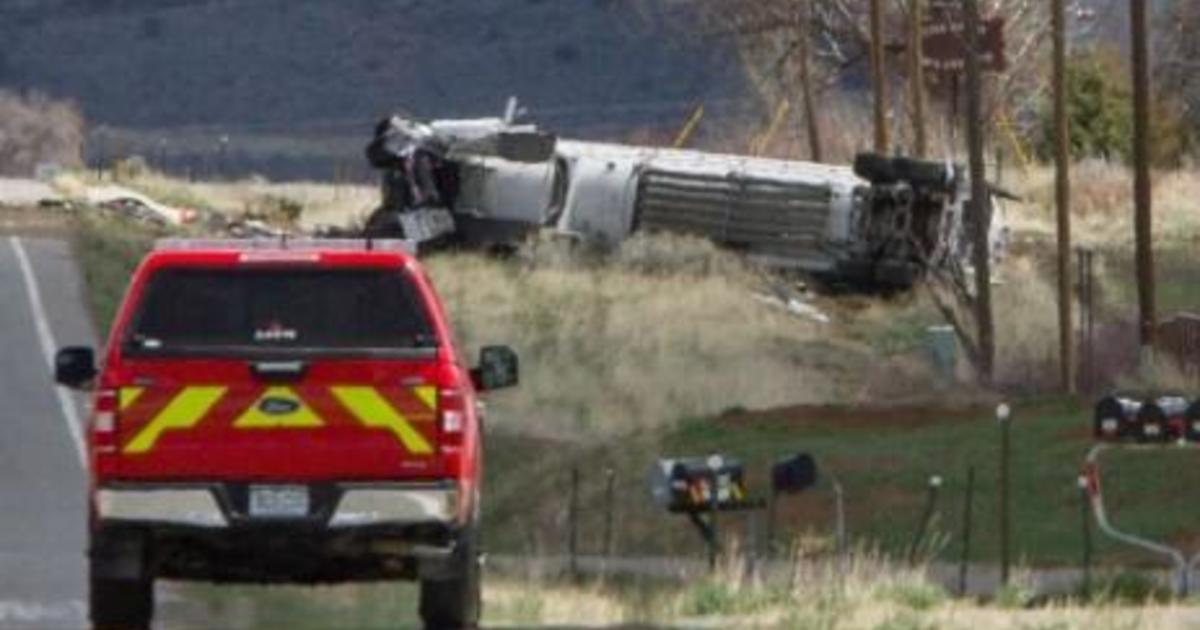Front Range Project Gives An Edge In Gas Liquids
COLORADO SPRINGS, Colo. (AP) - The Front Range Pipeline that runs through eastern El Paso County has positioned Colorado to take advantage of the burgeoning market for natural gas liquids.
The pipeline, which began operating in February, is expected to become increasingly important as the state's production of natural gas liquids continues to grow. Last year, the Denver-Julesburg basin produced about 53,000 barrels of NGLs per day; by 2019, that number is expected to nearly double, according to research by Bentek Energy, a Denver-based energy analytics firm.
NGLs include ethane, propane, butane and natural gasoline.
Every day, the 435-mile pipeline transports about 80,000 barrels of NGLs from Weld County, which sits atop the Denver-Julesburg basin, to Skellytown, Texas. There, it connects to the Texas Express pipeline, which carries the liquids to Mont Belvieu, Texas, the largest NGL hub in the country. The liquids are then stored, processed and distributed.
Construction of the pipeline, which extends about 24 miles through northeastern El Paso County, began last year. It runs underneath more than 50 tracts of private property in the county, according to public records, and lies at least 3 feet below the ground.
The companies that own the pipeline - Texas-based Enterprise Product Partners and Anadarko Petroleum and Denver-based DCP Midstream - had to purchase rights of way from the property owners before moving forward with the project. The companies, which together form Front Range Pipeline LLC, secured 25-foot easements on both sides of the pipeline that restrict property owners' use of that space.
The El Paso County Public Services department required a $3.3 million bond for Front Range's use of county roads to construct the pipeline. The corporation will pay property taxes after the State Department of Revenue assesses value of the pipeline and apportions it to the affected counties next year. Until then, no one can say how much the county might receive.
The joint venture offers Colorado NGL producers a direct route to Mont Belvieu. Before construction of the Front Range Pipeline, Colorado NGL producers transported their products using the Overland Pass and Mid-America pipelines, both of which pass through the state's oil and gas basins. But neither connects directly to Mont Belvieu.
"Producers in (the Denver-Julesburg basin) now have the capacity to ramp up their drilling plans," said Rick Rainey, vice president of public relations for Enterprise.
By 2020, the pipeline's daily transport volume is expected to increase to 107,000 barrels per day because of the projected expansion of the NGL market, Rainey said. It has the capacity to carry 150,000 barrels per day.
The boom in the NGL market is largely a result of a drop in domestic natural gas prices and an increase in crude oil prices, according to research by the U.S. Energy Information Administration. The development of horizontal drilling and hydraulic fracturing technology during the past decade allowed oil and gas producers to extract large amounts of natural gas from dry shale plays. But supply exceeded demand, pushing prices down and encouraging producers to turn to crude oil and NGLs, two commodities that often correlate in price.
"Producers have been focusing their efforts on oil and liquid-rich plays to achieve the highest returns they can," said Jennifer Van Dinter, manager of NGL analysis at Bentek. "Targeting wet gas plays has been a key strategy for their production growth."
NGL production in the Denver-Julesberg basin pales in comparison to other wet gas plays. In 2013, the Eagle Ford basin in Texas produced 543,000 barrels per day. By 2019, that number is expected to reach 900,000 barrels per day, according to Bentek research.
Van Dinter said the Front Range pipeline will play a key role in the development of Colorado's NGL reserves because pipeline infrastructure is limited. Producers in the Williston Basin, a large oil and gas play underlying parts of Montana, North Dakota and South Dakota, are now competing with Colorado producers to use the Overland Pass pipeline.
"Front Range (Pipeline) gives the Rockies another avenue to move liquids down to the Gulf Coast," she said.
Despite a projected increase in the need for NGLs during the next decade, supply is expected to grow faster than demand, according to Bentek research. NGL suppliers are evaluating demand in overseas markets.
"We will definitely require exports to balance the NGL market," Van Dinter said. "We currently send natural gas up to Canada for their oil sands projects. With propane and butane, we are building (liquefied petroleum gas) export terminals. Where they will go is something we're trying to learn more about here."
The United States has never shipped ethane overseas, but exports may begin soon. Last month, Enterprise announced its plans to build an ethane export terminal in Houston. It's expected to begin operations in 2016.
"(Exporting ethane) is still a little bit of a situation that has to be proven because we have never exported via ship," Van Dinter said. "Actually moving it across water theoretically works, but we haven't tried it."
Regardless of how the NGL market evolves, Front Range revenue is largely insulated against fluctuations in demand. To use the pipeline, producers must enter a 10-year contract that requires them to ship a fixed amount of NGLs. If a producer ships less than that amount, it must pay the difference. The ship-or-pay model is common in the pipeline industry, Rainey said.
He declined to reveal how many contracts Front Range has acquired.
- By KATHERINE BLUNT, The Gazette
(© Copyright 2014 The Associated Press. All Rights Reserved. This material may not be published, broadcast, rewritten or redistributed.)



